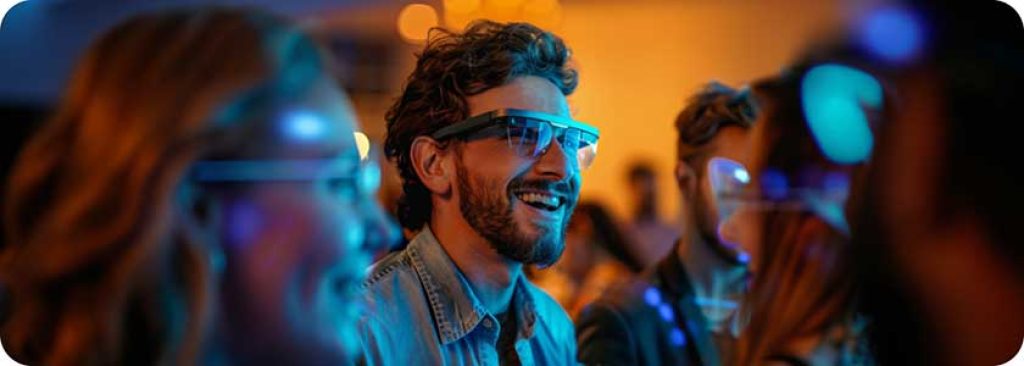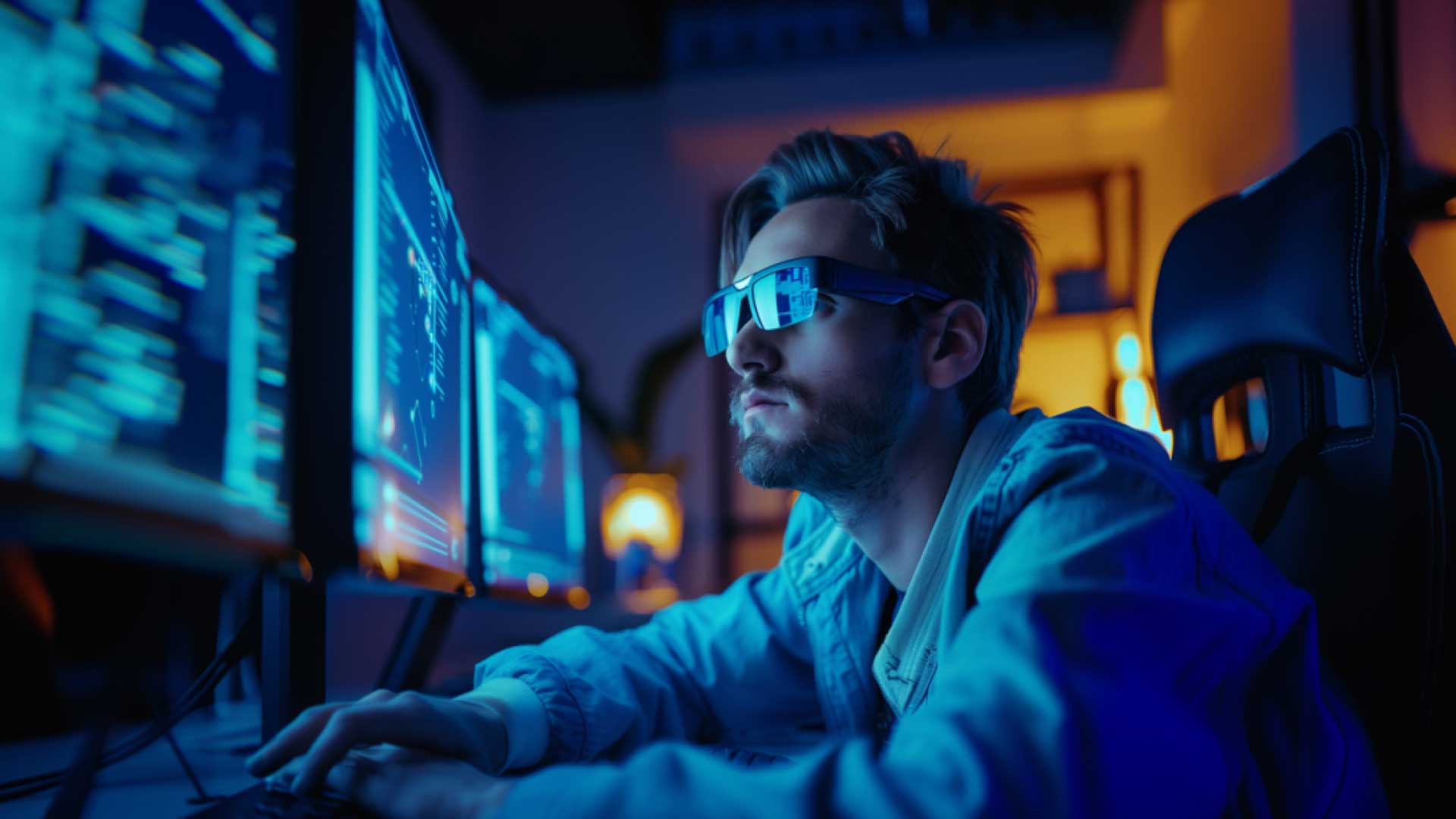Wearable Technology for Low Vision: Transforming How We Navigate the World
Wearable Technology for Low Vision: Transforming How We Navigate the World
Blog Article
Discover Advanced Assistive Instruments for People With Visual Problems
The landscape of assistive modern technology for people with visual impairments is developing rapidly, providing an array of cutting-edge devices that enhance autonomy and engagement. From smart glasses that perfectly merge visual input with auditory guidance to sophisticated navigation applications that redefine spatial understanding, these tools are improving possibilities.
Smart Glasses Innovations
Smart glasses represent a significant advancement in assistive modern technology for people with aesthetic disabilities. These innovative devices integrate various features made to improve the individual's interaction with their setting. Furnished with video cameras and sensors, smart glasses can capture real-time aesthetic info, which is then refined and communicated to the user via audio feedback or haptic feelings. This functionality permits individuals to obtain instant descriptions of their environments, improving their capacity to engage and navigate with the globe.
In addition, improvements in expert system have actually even more boosted the capabilities of wise glasses. Machine discovering formulas can recognize faces, checked out message, and identify items, making them invaluable tools for everyday jobs. Individuals can receive auditory signs that offer context concerning their environment, fostering self-reliance and self-confidence.
Additionally, the ergonomic style and light-weight nature of several smart glasses make them appropriate for extended usage, ensuring comfort while improving capability. As these devices continue to develop, they hold the possible to change the way individuals with visual disabilities experience their day-to-day lives, linking the gap between ease of access and innovation. The continuous r & d in this field guarantee to expand the opportunities for smart glasses, making them an essential part of modern-day assistive tools.
Navigation Application and Devices
Numerous navigating apps and tools have become necessary sources for people with aesthetic disabilities, substantially enhancing their capability to pass through unknown atmospheres. These innovations take advantage of GPS performance, audio hints, and real-time data to offer users with precise navigation aid.
One noticeable instance is the Aira app, which links users to trained representatives who can give aesthetic descriptions of surroundings and navigating support with a live video feed. This solution boosts the individual's spatial understanding and confidence while browsing. One more notable tool is Seeing Eye GPS, which supplies voice-guided navigation and points of interest, making it possible for customers to gain access to important information concerning their surroundings.

As modern technology remains to advancement, the development of extra innovative navigation tools assures to additional empower people with aesthetic disabilities, helping with seamless mobility and combination into varied atmospheres. Such innovations contribute in advertising a more comprehensive society.
Braille Technology Innovations
Recently, innovations in Braille technology have dramatically changed how people with visual impairments gain access to details and involve with the globe around them. The growth of mobile Braille display screens has transformed reading by enabling individuals to attach wirelessly to smart devices, tablets, and computers. These tools transform text right into Braille in real-time, making it possible for smooth communication with digital material.
Furthermore, ingenious Braille printers have emerged, enhancing the production of responsive products. Modern embossers are quicker and more effective, enabling the rapid production of Braille papers and instructional materials. This effectiveness minimizes the time and cost related to producing Braille sources, making them a lot more easily accessible to institutions and organizations.
In addition, the assimilation of Braille with other technologies, such as expert system and device knowing, has actually opened new methods for individualized knowing experiences. Voice acknowledgment and synthesis modern technologies can look at here now match Braille, giving a comprehensive approach to details dissemination.
As the need for inclusive education and learning and work environment environments expands, these technological innovations play a vital role in encouraging individuals with aesthetic impairments, guaranteeing they have equal accessibility to information and chances in various elements of life.
Wearable Instruments for Self-reliance
An expanding array of wearable gadgets is enhancing independence for people with visual disabilities, supplying cutting-edge services that enhance navigation and day-to-day living. Braille displays and notetakers. These devices use innovative innovations to give real-time feedback and support, advertising freedom in various atmospheres
Wearable technology likewise consists of smartwatches that can be programmed with ease of find an ophthalmologist access attributes, enabling individuals to obtain notifications, track their places, and even require aid with the touch of a button. Some tools include artificial important source intelligence to assess the atmosphere, offering sound summaries of neighboring things or people.
Voice-Activated Assistive Solutions
Leveraging voice-activated assistive services has changed the landscape of assistance for people with aesthetic disabilities, giving hands-free communication and accessibility to a selection of jobs. These technologies utilize natural language processing and synthetic intelligence to allow individuals to do daily activities with basic voice commands.

Moreover, recent advancements in voice recognition accuracy have improved the user experience considerably, fitting diverse accents and speech patterns. This inclusivity guarantees that more individuals can benefit from these technologies, fostering a greater sense of autonomy.
Verdict
To conclude, the development of innovative assistive tools dramatically boosts the freedom and lifestyle for people with visual impairments. Innovations such as smart glasses, navigation apps, Braille technology, wearable devices, and voice-activated solutions jointly promote a more inclusive setting. These modern technologies equip individuals to navigate their environments with self-confidence and engage even more completely with the world, ultimately advertising higher ease of access and equal opportunities for people dealing with visual obstacles.
The landscape of assistive innovation for individuals with visual problems is progressing rapidly, presenting an array of ingenious devices that improve freedom and engagement.Smart glasses stand for a considerable improvement in assistive modern technology for people with aesthetic disabilities. As these devices continue to progress, they hold the possible to revolutionize the way individuals with visual impairments experience their everyday lives, bridging the space in between availability and technology.In current years, advancements in Braille innovation have significantly transformed how individuals with visual impairments gain access to info and engage with the world around them. These modern technologies encourage users to browse their environments with confidence and engage even more totally with the world, eventually advertising better access and equivalent chances for people encountering aesthetic obstacles.
Report this page